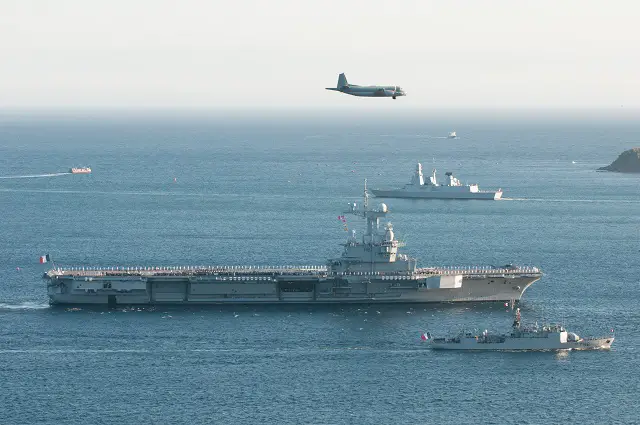Breaking news
Euronaval 2018: French Navy set to get its own Cooperative Engagement Capability.
By Xavier Vavasseur - Editor in Chief
The French Navy (Marine Nationale) is set to get its own cooperative engagement capability or CEC. The TSMPF (for "tenue de situation multi-platformes") or "veille coopérative navale", is a multi-platform engagement capability demonstrator system which has been under development by the French Navy, the French defence procurement agency (DGA) and the French industry.
 The French Navy (Marine Nationale) is set to get its own cooperative engagement capability or CEC, first for the FTI then for the FREMM frigates.
The French Navy (Marine Nationale) is set to get its own cooperative engagement capability or CEC, first for the FTI then for the FREMM frigates.
During the Euronaval 2018 press tour, we learned that TSMPF has already been successfully tested in a scenario involving the Charles de Gaulle aircraft carrier, an Horizon-class air defense destroyer and a FREMM Frigate sharing a common tactical picture against 8 Rafales which simulated anti-surface warfare (ASuW) missions against the aircraft carrier.
The French CEC relies among other things on V/UHF means made available by RIFAN step 2. The RIFAN (Réseau IP de la Force AeroNavale or naval and naval aviation's IP network) in "step 2" was qualified by the DGA in November 2015.
Cooperative Engagement Capability (CEC) is a real-time sensor netting system that enables high quality situational awareness and integrated fire control capability. It is designed to enhance the anti-air warfare (AAW) capability of surface vessels and aircraft by the netting of geographically dispersed sensors to provide a single integrated air picture, thus enabling Integrated Fire Control to destroy increasingly capable threats such as cruise missiles and aircraft. This capability would be a first in Europe, for a European navy.
We learned that the first class of French Navy surface combatants to be fitted with this technology would the future FTI (mid-size frigate) followed by the FREMM and Horizon-class. However, the French Navy E-2C Hawkeyes (or the future E-2D Advanced Hawkeyes) will probably not benefit from such an upgrade because the United States are unlikely to grant access to the AWACS computers to the French industry.
 On the high seas, the TSMPF brings a vital additional capability in the air defense task of the naval force, especially in the case of high-intensity combat, when faced with saturating threats.
On the high seas, the TSMPF brings a vital additional capability in the air defense task of the naval force, especially in the case of high-intensity combat, when faced with saturating threats.
About TSMPF
According to French parliamentary reports, TSMPF is intended to provide an increase in real time air and surface (3D, 2D) watch and track capability by developing a tactical air and surface picture from the fuzion of all sensors deployed by the task force. TSMPF is the detection part of the "Multi Platform Engagement Capability" and is the indispensable naval component of Network Centric Warfare in any theater.
The need exists both on the high seas and in the littoral zone. It is a question of passing from the concept of a combat system of a ship to that of combat system of a deployed force, fuzzing all the sensors of the task force (at sea, on land or in the air). The ultimate goal is to engage multiple threats from a real-time sensor picture enriched and broadcast to all platforms of a theater of operation. Tracking uses track fusion, with enriched tracks (from radar, infrared sensors and R-ESM).
On the high seas, the TSMPF brings a vital additional capability in the air defense task of the naval force, especially in the case of high-intensity combat, when faced with saturating threats. TSMPF could be an alternative for allied nations to the American CEC.


























